Brandywine Stories: Forgotten Patriot
The story of Ned Hector as told by Noah Lewis
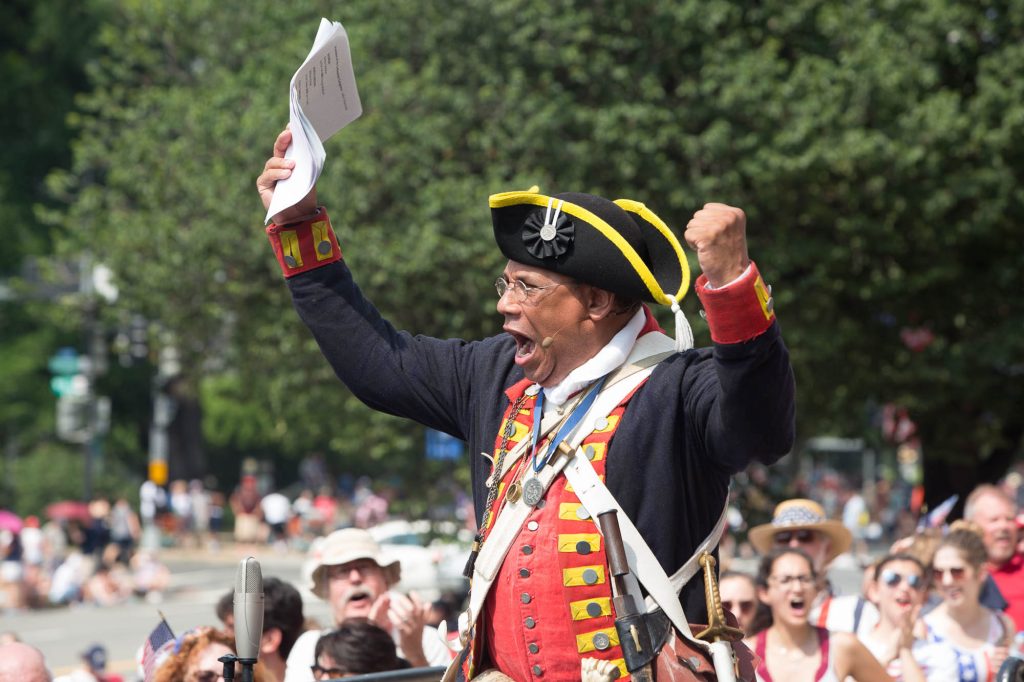
When Noah Lewis first put on the coat and hat of Edward “Ned” Hector for his daughter’s fourth-grade class, he never imagined it would shape the next chapter of his life. The former electronic repair technician found himself transformed by the story, the reaction of
students and a growing need to set the historical record straight.
A Free Black Hero
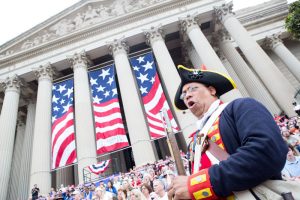
Almost three decades later, Lewis has become one of the nation’s most compelling historical educator-reenactors, using his portrayal of Ned Hector to illuminate a forgotten legacy of Black patriotism and bravery during the American Revolution.
Edward “Ned” Hector was a free Black man who served as a bombardier and teamster in the Continental Army. He fought in the Battle of Brandywine in September 1777 as part of Proctor’s 3rd Pennsylvania Artillery. When American forces were forced to retreat under heavy British attack, many soldiers abandoned their equipment to save themselves. Hector famously refused. “I will save my horses or perish myself!” he reportedly shouted, successfully driving a wagon loaded with guns, supplies and his team of horses to safety.
Lewis first encountered Hector’s name while researching African American history and was stunned to find not only a man of color in a Revolutionary War battle, but one admired and remembered by his peers long after his death. “I had grown up with the impression that Black people were slaves during the Revolution,” Lewis said. “Learning about Ned Hector shook that belief. He was a hero and he was free.”
Postwar Life
Hector’s military service was followed by decades of respected civilian life in what’s now the town of Conshohocken in Montgomery County. Census records list him as a “free man of color,” a property owner who paid taxes and was known in his community.
He lived to be about 90 years old, dying in January 1834. Hector was buried in the cemetery of Mt. Zion AME Church in Norristown. Though his grave was later lost to development, his memory endured, honored with a state historical marker, plaques and a street named in his honor.
A Reenactor’s Lessons
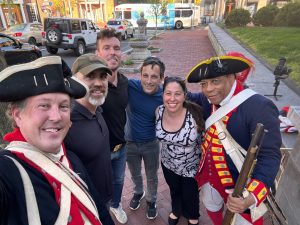
“I’m not just wearing the costume,” Lewis explained. “I’m teaching people. I’m helping them unlearn what they thought they knew about our history.”
As an educator-reenactor, Lewis distinguishes himself from actors who stay entirely in character. His programs mix vivid storytelling, historical context and hands-on experiences, such as a participating in artillery drills that get audiences marching, loading and “firing” as Revolutionary War soldiers. “Adults and kids both light up when they get to do something,” Lewis said. “That’s how history sticks.”
He emphasizes that African Americans have always been central to the nation’s story, from gathering intelligence to moving supplies to acts of battlefield heroism. “The freedoms we enjoy today were built on the backs of people like Ned Hector,” Lewis said.
Recent moves by institutions like the National Park Service to scale back live reenactments, especially “force-on-force” battle demonstrations, concern Lewis. “These events are how people connect to history,” he argued. “If you take that away, you’re taking away context and emotional engagement.”
Untold Revolutionary Stories
The Battle of Brandywine, fought across southern Chester County, was a costly historic moment. Hector’s defiance came during a chaotic retreat that saw the Americans lose the field but preserve much of their fighting strength. “Hector chose to risk his life rather than surrender what he was entrusted to protect,” Lewis said.
Lewis hopes to one day create a documentary film on the untold stories of Black soldiers in the colonial era, much as the movie “Glory” shared stories of Black Civil War troops. “We need that kind of awakening for the Revolutionary War,” he said. Lewis hopes that America’s 250th anniversary in 2026 will inspire renewed interest in these histories.
Telling Hector’s story means presenting a full view of American history, not just the victories and ideals, but also the contradictions that came with them. Lewis sees the Revolution as a vital fight for liberty that left unfinished business and makes space in his programs for honest conversations about history and legacy.
For Noah Lewis, portraying Ned Hector is more than a role — it’s a calling. Every school visit, public event and reenactment is a chance to restore a missing piece of the American story. And in telling it, Lewis offers a form of “holiday giving” that isn’t wrapped in paper, but in the gift of remembrance.
Why Do They Do It? The Call of Reenactment
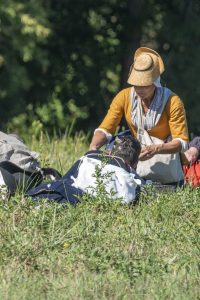
For reenactors like Brad Upp and Randell Spackman, stepping into the past is more than a weekend hobby — it’s a calling to keep history alive.
Upp traces his passion to reading his great-great-great-grandfather’s Civil War diary, later finding community in regiments that mix battle drills with music, preservation work and even placing headstones for forgotten soldiers. “It’s so much deeper than people imagine,” he said. “We’re honoring lives and telling stories.”
Spackman, who helps run the nation’s largest Revolutionary War reenactment at Chester County’s Brandywine Battlefield, thrives on making history tangible. “It’s not a bunch of boring old stories; it’s who we are,” he explained. Whether braving 95-degree days in handmade uniforms or fielding questions from curious kids, the reward is seeing history click for someone new.
Both men say that joining in is more straightforward than people think. Many reenactment units have gear to loan so newcomers can try an event before investing. And local reenactments are a good first step. “Just walk up and talk to someone. There’s always a way to pitch in,” said Spackman.
From the crack of muskets to late-night conversations by the fire, reenactors keep history in motion, inviting others to step in, ask questions and become part of the story themselves.
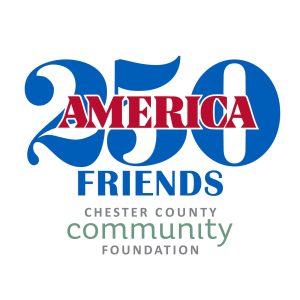 Kim Andrews is an A250 Friends Outreach Officer of the Community Foundation and nonprofit consultant. She wrote this article to raise awareness of Chester County’s role in our nation’s fight for freedom and to build engagement for 2026, the 250th anniversary of the Declaration of Independence. To get involved, contact America 250 Friends at the Chester County Community Foundation, A250Friends.org.
Kim Andrews is an A250 Friends Outreach Officer of the Community Foundation and nonprofit consultant. She wrote this article to raise awareness of Chester County’s role in our nation’s fight for freedom and to build engagement for 2026, the 250th anniversary of the Declaration of Independence. To get involved, contact America 250 Friends at the Chester County Community Foundation, A250Friends.org.
